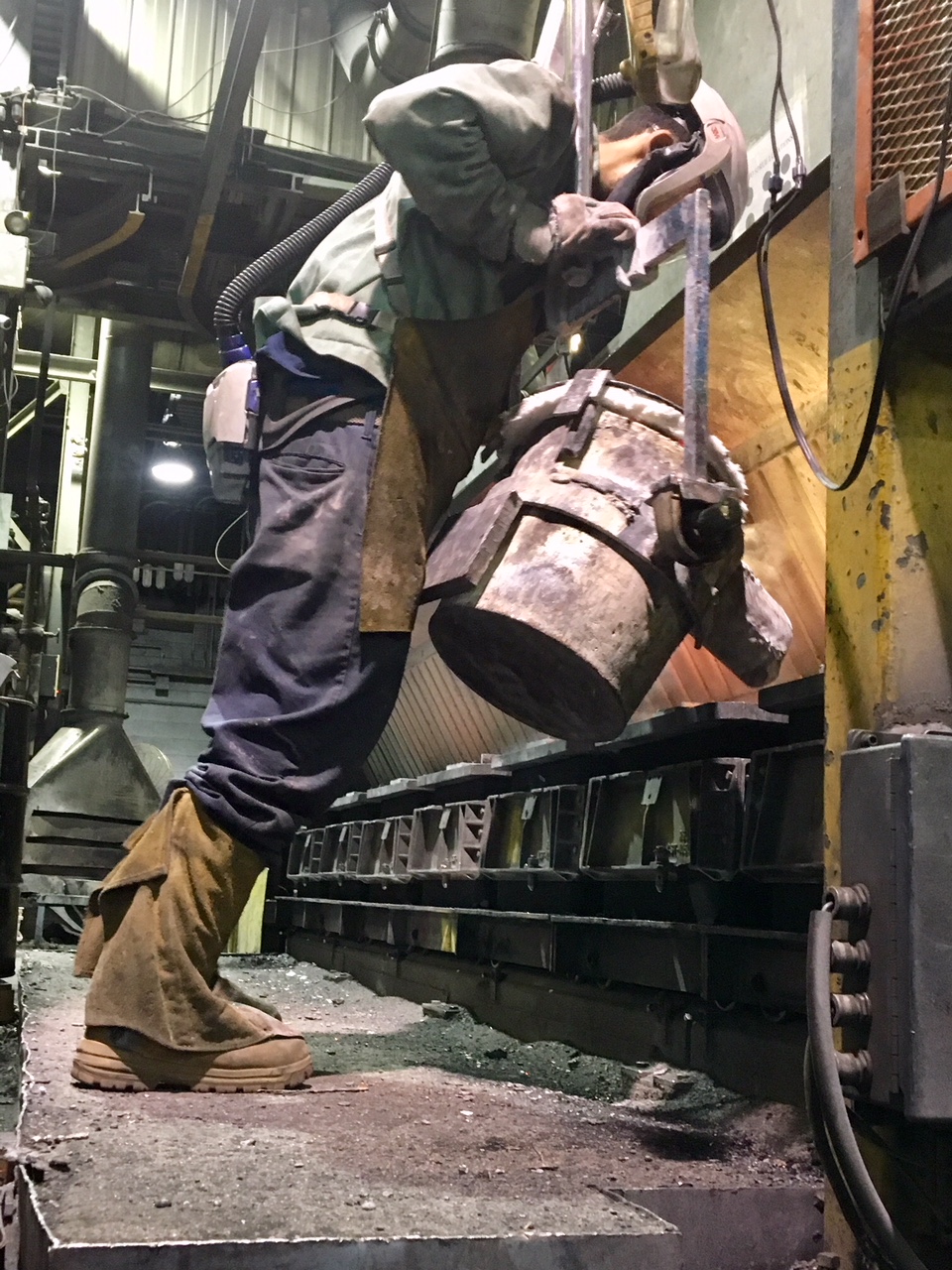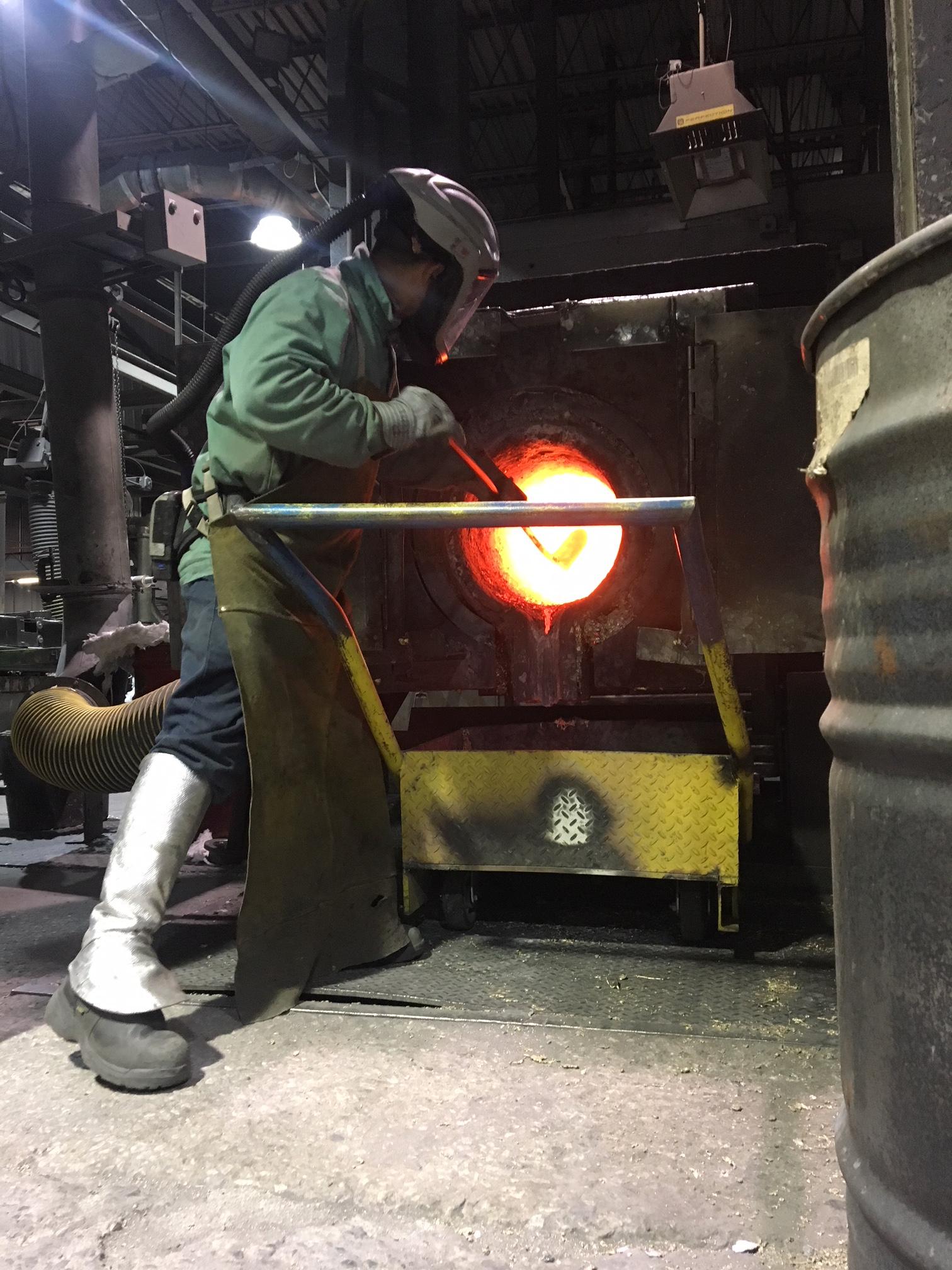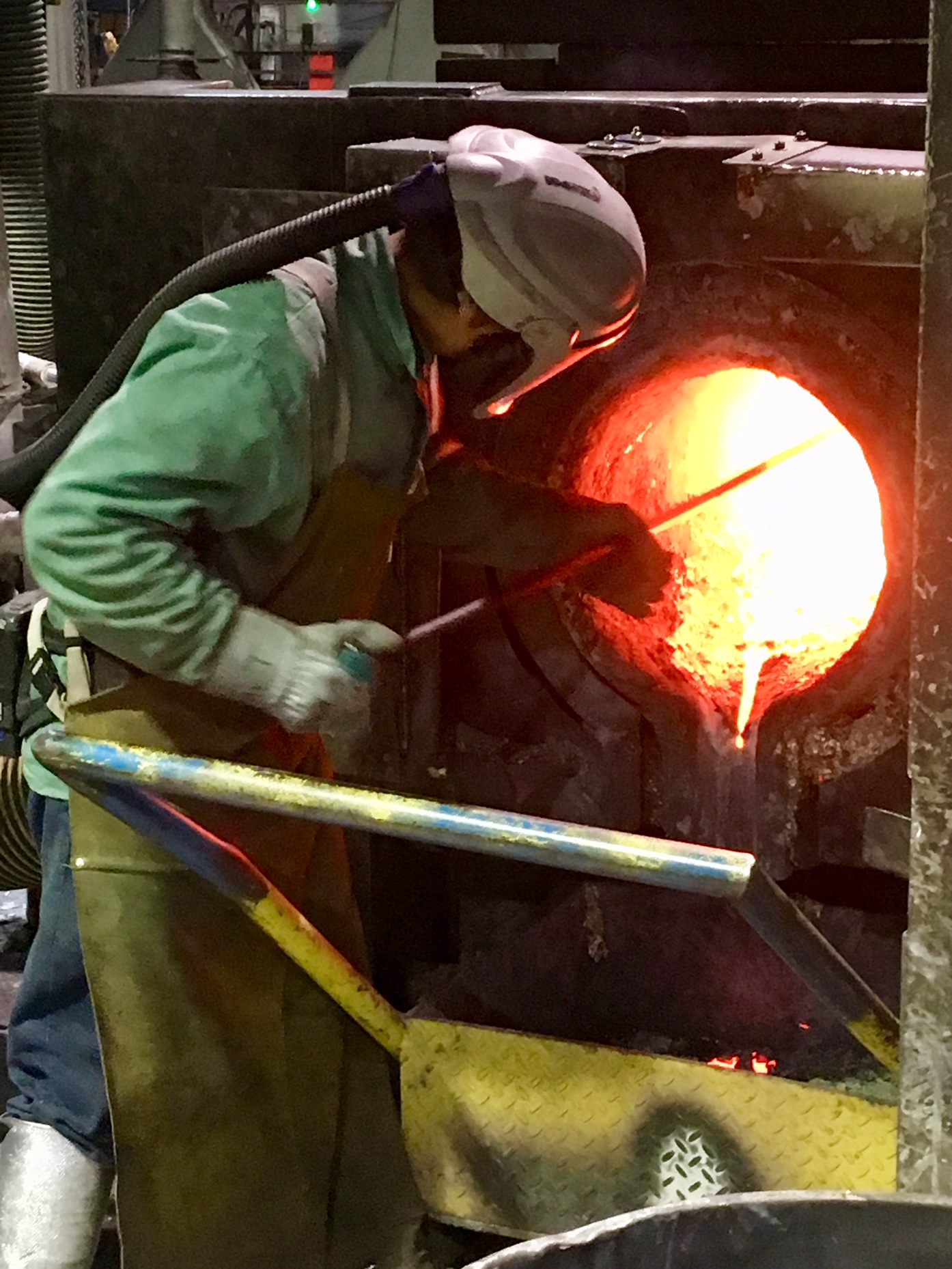Brass and Bronze Sand Casting Foundry in Lancaster, PA
Before you can manufacture the metal components you require for an upcoming project, you need to select an appropriate casting method. Dry sand casting is one of the most widely used casting methods, offering cost-effective and consistent results. At J. Walter Miller, we offer brass and bronze sand casting manufacturing services near Lancaster, PA. Whether you need a sand casting foundry to fulfill an order that's large or small, simple or complex, we can help.
What Is Sand Casting?
Sand casting is a metal foundry casting process that uses sand molds to form complex metal parts. In the dry sand casting process, a foundry will create a custom mold based on a pattern — a full-sized model of a part used to make an impression in the sand.
After a mold is created, the foundry pours molten metal into it to form the desired part. Sand molds can be used only one time. That said, the sand casting process still proves its efficient and cost-effective advantages when compared to other casting methods.
Some of the advantages of our sand casting services include:
- Strength: Sand molds hold their form and withstand exposure to extreme heat.
- Consistency: Sand's consistency allows it to fill small cavities in a mold pattern, which is ideal for creating detailed parts free of defects.
- Reusability: After a finished part is broken out of a sand mold, the sand mixture can be conditioned and recycled for use in future molds.
Sand Casting Applications
Foundries can use the sand casting process to create a wide range of products, from consumer goods to components for heavy machinery. At J. Walter Miller, we can sand cast products such as sprinkler heads, pump parts, switch gears and connectors. Some of the industries compressed sand casting foundries can serve include:
- Agriculture
- Automotive
- Aerospace
- Electrical
- Medical
- Mining
- Fluid management
- Military and defense
Green Sand Casting Equipment and the Manufacturing Process
Although people have been using sand casting to manufacture metal products for many years, getting a high-quality result requires expertise and specialized equipment. At J. Walter Miller, our services include both. With ISO 9001:2015 certification, we work to ensure perfection at each stage of the process:
- Mold making: The foundry's casting process begins with mold making, which involves pressing sand around two halves of a mold pattern. Patterns act as a model for the object being cast.To ensure the highest quality casting, the mold pattern must be suited for mold type and metallic properties. Before pouring, we'll secure the green sand molding halves together tightly.
- Pouring:Next, we will pour the alloy of your choice into the sand molds. After heating to a set temperature in a furnace, the liquid metal will flow into a pouring basin and gradually fill the mold through gates and risers.
- Removal: After a cooling period, we'll break the sand molds and remove the castings. The final step can involve trimming away excess molding material and shot blasting to remove remaining sand from the product.
We use automated machinery throughout the casting process to keep our costs competitive and our lead times short.
What Is Green Sand?
Not all sand has the right consistency for sand casting. Green sand is an aggregate of sand, water, bentonite clay and combustibles specifically designed to provide high-quality sand casting results. To complete a quality casting, you need the proper green sand casting supplies. Green sand is one type of foundry sand used for mold making.
Green Sand Composition
Despite what its name suggests, green sand can appear in various colors. "Green," in this case, refers to a material the industry uses in its wet state, such as green wood. One alternative casting technique relies on creating the mold from wet sand, heat-drying the mold and then pouring the metal. Foundries use the dry sand casting process for heavier castings because the mold is more rigid.
The most plentiful material in the aggregate is sand, of which the sand mixture comprises a specific kind of silica. Casting can make silica particles airborne, which poses a health risk for foundry workers. However, our facility has an effective air control system that filters silica and other particles from the air to keep our employees safe.
Each green sand recipe calls for a different amount of clay. That proportion affects various qualities of the mold, such as:
- Whether the molten metal in the mold can degas.
- The surface finish.
- Moldability.
The combustible material in green sand contains coal, which makes up less than 5% of the aggregate. When we pour metal into the casting, some of the coal burns on the metal's surface, encouraging off-gassing.
How Are Green Sand Molds Made?
Making a green sand mold starts with filling a mold maker with the wet sand. The mold maker presses the material, creating a pattern and form. Imagine a child with play dough who presses it into a pattern — green sand behaves as though a child is pressing patterns into the surface to make a shape.
Green sand molds don't have the same tight tolerance as no-bake castings and other molds. If your castings must fit precise dimensions, they might need more machining to get the casting you need.
How Is Green Sand Recycled?
Before foundries repurposed green sand, the bulk of the material ended up in landfills. Once we've used green sand for casting, using it again requires a long, expensive process. Separating materials that are "spent" from those we can reuse is not cost-effective. The most economical green sand recycling process involves using new sand for each mold. We reclaim the old sand and recycle it by using it for other purposes. If you want to buy reclaimed sand, you can do so at a low price.
Green sand has no toxic substances. That means reusing it is a worry-free and responsible solution to waste. Reused green sand can also act as a fine aggregate substitute in the construction and manufacturing industries.
Our Green Sand Casting Service Capabilities
Using our green sand foundry molding production process, we can manufacture brass and bronze castings using a wide range of alloys. Our automated machinery quickly produces metal castings that weigh between 1 ounce and 70 pounds and measure between 1/8 inch by 1/8 inch by 1/8 inch and 8 inches by 16 inches by 18 inches. If you're looking for the top sand casting foundry in Pennsylvania capable of meeting your expectations for quality, reach out to us today for your green sand metal casting quote.




